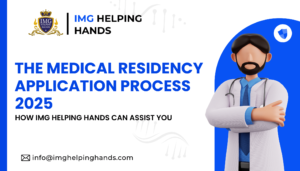
The Medical Residency Application Process 2025: How IMG Helping Hands Can Assist You
Have you ever wondered what it truly takes to secure your dream residency in an ever-evolving medical landscape? As we step into 2025, the residency

Getting Hands-On US Clinical Experience in the US healthcare system is extremely valuable for international medical graduates (IMGs) looking to advance their medical careers. Whether you are seeking residency in the US or want to strengthen your CV, hands-on US clinical experience can provide you with the clinical skills, networking opportunities, and residency application boost you need. Read on to learn about the different types of US clinical experience available to IMGs and how to make the most of this experience.
Gaining hands-on clinical experience in the US as an IMG can be a challenging but rewarding endeavor. With competition for US residency positions at an all-time high, US clinical experience has become an almost essential component of a strong residency application. This first-hand exposure to the US medical system provides IMGs with invaluable clinical training while demonstrating their commitment to US residency programs.
In this article, we will explore the various forms of US clinical experience open to IMGs, discuss how to obtain these opportunities, highlight the key benefits, and provide tips for getting the most out of your US rotations. Whether you are a medical student or an IMG, this guide will outline how to advance your medical career through impactful US clinical experience.
There are several main types of US clinical experience available to international medical graduates:
Observerships, also known as clinical shadowing programs, allow you to shadow physicians and learn about medical specialties by observing in a clinical setting. Observerships are typically 1-4 weeks long and are primarily observational, with minimal hands-on practice. They provide excellent specialty exposure and networking opportunities.
Externships are 4-12 week clinical training programs where you will work under limited supervision, actively participating in patient rounds and care. Externships provide more hands-on experience than observerships.
Clerkships are longer clinical rotations, usually 4-12 weeks, where you take on supervised roles managing patients, similar to a medical student. Clerkships provide excellent hands-on clinical training.
Many hospitals and universities offer research programs where you can gain experience conducting clinical research. These research opportunities help strengthen your academic CV.
Some US medical schools offer clinical elective rotations where international medical students can gain clinical experience under supervision. These are extremely competitive but provide outstanding US training.
As an IMG, navigating the complex process of obtaining US clinical experience can be challenging initially. Here is an overview of the key steps:
IMGs must meet certain eligibility criteria to participate in US clinical training programs. This typically includes having passed USMLE Step 1 and 2, obtaining ECFMG certification, and meeting specific visa requirements.
Once you identify programs you are interested in, reach out to the program director via email or phone to inquire about eligibility and availability. Provide an updated CV highlighting your credentials and motivation.
Many hospitals, medical schools, and companies offering US clinical training will have online application forms to submit your background, objectives and schedule availability. Some programs have rolling admission whereas others have fixed cycles, so apply early.
Unfortunately, most US clinical experience programs do not provide stipends or funding. You will need to finance the program fees, travel/housing costs, and living expenses yourself. Some external scholarships are available.
Once accepted, fulfill all program requirements in a timely manner. This can include paperwork, payments, obtaining medical liability insurance, visas, travel logistics, and more. Stay organized!
Completing hands-on US clinical rotations as an IMG provides numerous lifelong benefits beyond just strengthening your residency application.
The exposure to real patients in US hospitals and clinics under attending physician supervision is invaluable. You will be able to vastly improve your clinical skills, medical knowledge, and hands-on capabilities.
By training directly in US healthcare facilities, you will gain first-hand experience with the American medical system. This includes learning electronic medical records, interdisciplinary teams, residency training, insurance/payments, and overall best practices.
Your supervising physicians and fellows can become invaluable mentors and advocates who provide clinical teaching, career guidance, and letters of recommendation. Networking expands your professional opportunities.
US clinical experience demonstrates your commitment to training in America. It strengthens your CV, prevents gaps, provides US letters of recommendation, and gives you talking points for residency interviews.
The clinical and technical skills, medical knowledge, and professional behaviors gained during US rotations will help prepare you to excel as a resident. You will have an easier transition to residency training.
Here are some key tips for IMGs looking to maximize their growth from US clinical experience:
While certainly requiring much planning, dedication and financing, obtaining hands-on US clinical experience provides unmatched growth opportunities for international medical graduates. The clinical exposure, mentorship, networking and residency application strength offered by these US rotations can be integral in transforming you into the competitive residency applicant you strive to be. Take control of your career and take the leap to gain experience in America’s medical system!
Get our most valuable tips right inside your inbox, once per month!

Have you ever wondered what it truly takes to secure your dream residency in an ever-evolving medical landscape? As we step into 2025, the residency

For IMGs, to practice medicine in USA is more than just passing USMLE and securing a residency; it also involves surfing through the intimidating visa
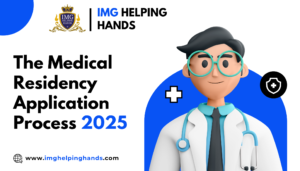
Are you ready to embark on one of the most transformative journeys in your medical career? The residency match process is a pivotal step for
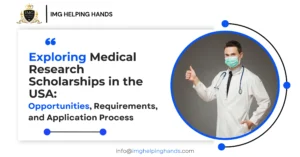
Pursuing medical research in the United States offers unparalleled opportunities for academic growth, access to cutting-edge technology, and the ability to work alongside leading experts
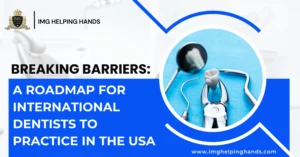
Embarking on a journey to practice dentistry in the United States is a dream for many international dentists. In the vast landscape of American dentistry,
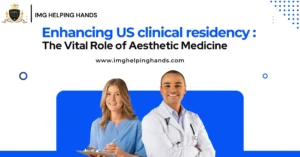
Have you ever considered the transformative power of aesthetics in the field of medicine? Is aesthetic medicine the silent cornerstone of modern clinical practice? Within
We are here to provide a safe and secure helping hand for medical students, graduates, and residents.
Our comprehensive guide will assist you in matching with your top-choice residency or fellowship program.




Payment Methods
Buy with Confidence
© IMG Helping Hands Copyrights 2024 Developed By Ecom Thrust